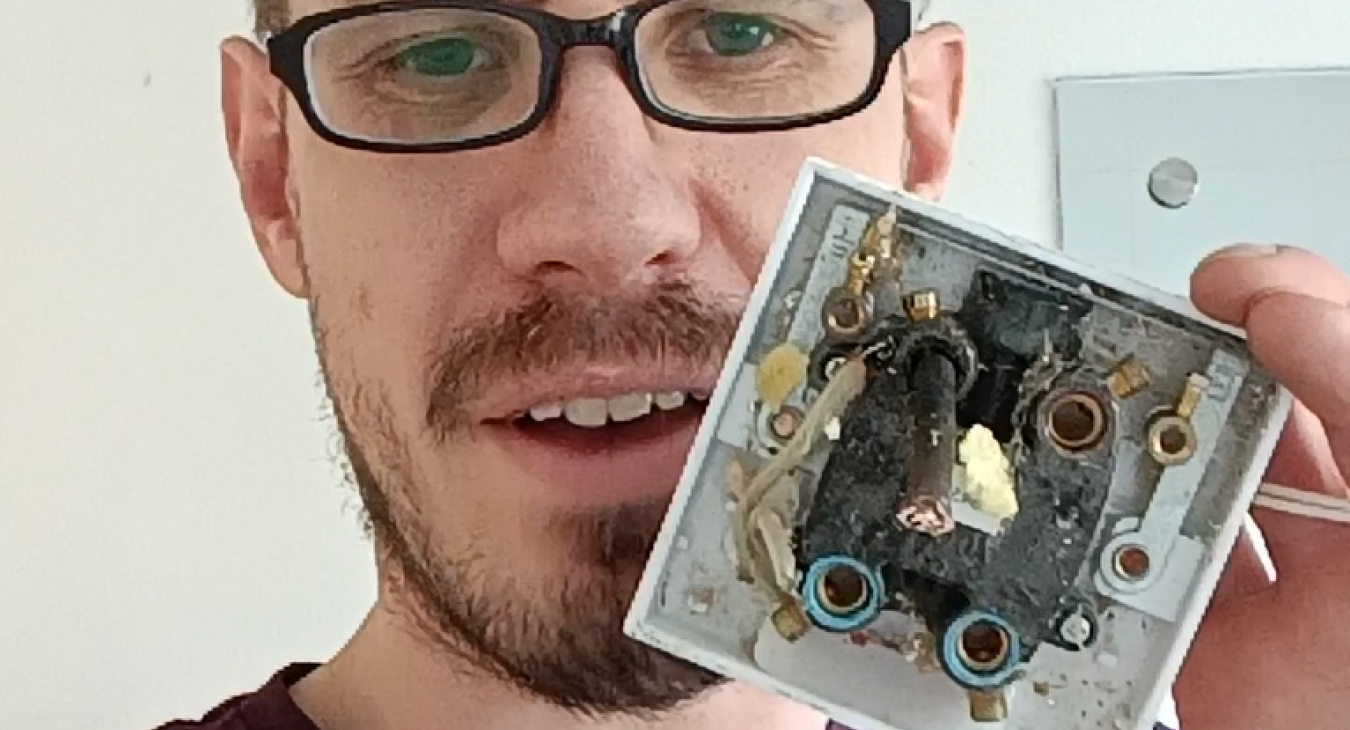How Much Does An EICR Cost in Kent?
You may, or may not have noticed that EICR prices can vary really quite wildly, and prices sometimes seem like they've been plucked out of thin air! Let's take a look at the origin of the landlord's EICR, what changed in 2020, and a comparison and analysis of EICR costs in Kent now in 2024.
What is an EICR?
An EICR is a report which acknowledges the state of the electrical installation, specifically with regard to its suitability for safe continued use. A periodic EICR (say, every 5 years) then becomes a maintenance programme with a paper trail, where a particular installation is sampled at particular intervals in order to monitor and maintain, and keep it safe for continued use.
EICRs generally arose from particular building insurance policies, business insurance policies, and obligations for commercial tenants as specified in the tenancy agreement. In factories, it is so important that machines are constantly working. Large factories tend to have their own maintenance team who routinely do daily, weekly, monthly checks to ensure everything is safe and reliable.
What changed in 2020?
For the most part, it was uncommon for EICRs to be undertaken in residential premises, until new legislation "Electrical Safety Standards in the Private Rented Sector (England) Regulations 2020" came into force in June 2020, and stipulated that all residential rental properties must be in receipt of a valid EICR by law.
Massively unprepared for this, landlords, letting agents, and electricians were caught like deer in headlights. What now?
landlords and letting agents relentlessly went to market and bartered for the lowest price to keep their costs down, and to a fair degree, electricians caved in as a race to the bottom ensued.
Without realising it, overnight, the EICR as depicted in the guidance note 3 became a cutdown version it once was. In a hysteria of corner cutting, quick looks, artificial reports, and loss-leading strategies, there was an unprecendented effort to match resources to job value in the EICR world. No one dares to admit it, but that is what happened. National companies paved the way for £50 EICRs and recruited heavily to meet demand. And in the nature of trying to stay competitive, the rest of the industry followed suit. £80 EICRs. £100 EICRs. Lims absolutely everywhere.
How much does an EICR cost?
According to Google... "electrical certificates £70" "EICR Certificate Cost £79 in London" "EICR report from £69" "From as little as £80 to £140"
Electricians typically charge from £45 an hour to nearly £200 an hour for planned appointments. Emergencies can lift the lid on £200 an hour and skyrocket out of hours, on sundays and certainly on christmas day! £45 an hour is really getting left behind since COVID-19 and the huge uptick in inflation rates. A more standard minimum rate is now more like £65 an hour, but for this example we'll keep it at £45.
The certificate itself takes between 30 minutes and an hour to fill out. let's for argument's sake, say it takes no time at all and the electrician does it for free in their own time of an evening. If we do the calculations on some of these advertised EICR prices that leaves.... Best case of 2 hours in a property. Sounds about right for a simple property if you get a jimmy on.
Lets say there's 4 booked in. The electrician doesn't take a lunch break and the properties are all next to each other. No travel time, no parking time, no getting tools out and loading tools back in the wagon, just purely carrying out the hands on part of an EICR. They've made £280 for the day. For most electricians, that's probably not even break even after all their overheads come out. They're at a loss with their wages. And now they've got 4 lots of paperwork to fill out that night, for free, in their own time.
Something's not adding up here. The electrician is being pressed to match the competition. They're likely operating below breakeven ie at a loss, and they've got hours of homework to do when they get in.
An average property probably averages around 6 circuits. If you have storage heaters that quickly turns into 10 circuits. Some properties will have little extras like downlights, outside lights, shed power, garage power, loft power, solar PV, EV chargers. These need to be checked too!
Each circuit needs at least one item to be checked. in some cases, it's two or three. For every circuit, in every fusebox in the property.
Many fuseboxes are poorly labelled so we're also hunting for what is powered by which circuit. On the note of hunting, do you know where your water main stopcock is? because we've got to hunt for that, too. Suddenly, this is starting to look a bit out of hand doesn't it?
So, how much should an EICR cost?
We price our EICRs on the amount of circuits in a rental property, and assume that there's limited fanciness in the installation. one fuse board with 6-8 circuits. In this common case, our EICRs cost £240-£300 in Kent.
This allocates enough resources to ensure a good quality EICR, carried out to the minimum standard required by our Guidance Note 3. This price allocates enough resources (read: buys us enough time) to ensure the electrical installation is suitable for safe continued use by your tenants.
We are part of a select few electrical contractors who know what is the right thing to do, and rejected the status quo of poor quality EICRs offered at below budget value.
What actually gets checked on an EICR?
We've delved into a little bit about what checks we do on an EICR. For a more thorough explanation, we invite you to check out our post on exactly this topic. And whilst we're checking out all these parts in the property, this is the sort of stuff we get to find and fix.
We never got around to explaining limitations, or lims for short. Limitations have so far been the cheat code that has allowed EICRs to become this watered down version of what these safety checks should be. All EICRs are likely to have some form of limitation, for example: "We were not able to visually check the cables buried in the wall, because doing so would mean digging the wiring out and wrecking the wall", which is a very realistic and widely accepted limitation. The problem is when limitations appear on EICRs that should otherwise not be a lim in any normal circumstance.
We publish our general limitations, and we like to keep any further limitations to an absolute minimum. Please see here what our normal limitations are, and a little guide showing you how you and your tenants can help us minimise any other real-world limitations we may have posed to us on the day.
What are the risks of being in receipt of a sub-par EICR?
This is yet to be seen so far, so we can't provide definitive information, but we will play devil's advocate. If something was to happen, and your property burnt down due to an electrical problem, you can bet your bottom dollar there will be an enquiry. They will be looking at the property. They will be looking at the tenants. They will be looking at the electrician. And they'll be looking at you.
The best defence we can think of? That you did everything you could do, so far as practically and reasonably possible, to ensure that property was properly monitored and maintained. A very easy way of demonstrating this is by agreeing with your electrical contractor the nature of the EICR, what is expected in the EICR, and that you require at the very least a minimum standard of EICR as depicted in GN3, with minimal limitations on their EICR visit, so far as reasonably practicable. The results and observations on the report should accurately reflect the actual nature of the property, and ideally should be really thorough.
There is nothing wrong with having ten C3 observations (nice to haves), and two C2 observations (needs rectifying in the soonest possible timeframe), and a C1 (needs rectifying immediately) on the report. It is much better to have these picked up on and dealt with, than skimmed over with a bit of a blind eye due to time factors and limitations, with everyone blissfully unaware of the dangerous situations lurking in the electrical installation, to then have the heavy hammer of the law swung your way.
Our two cents.
You need to ask yourself this question
With all this in mind, you need to ask yourself the question... Is your search for an EICR actually just a tickbox exercise, or do you genuinely want to order a preventative maintenance package to be carried out at your property?
If you require a real EICR in the Medway & Maidstone areas of Kent, feel free to call your friendly local electricians serving Medway & Maidstone!












